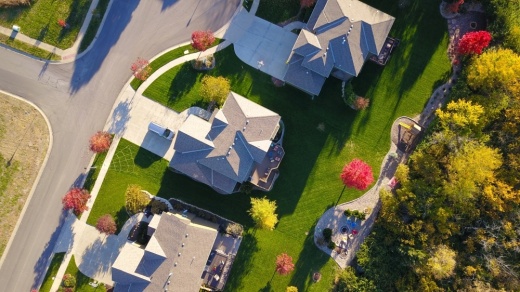“You can’t list a house and not have multiple offers,”
Sparrow Realty real estate agent Alina Rogers said. “Buyers can’t be picky.”
Pearland is a popular place for homebuyers due to its job opportunities, school districts and safe community, Pearland Director of Community Development John McDonald said.
“I think that it’s a national trend but especially for areas like [the Greater] Houston [area] that have jobs, amenities and good school districts,” McDonald said. “There is a greater demand for homes than there are homes.”
Over the past decade, Pearland and Manvel have seen a lot of residential growth near Hwy. 288 with the toll road and Pearland Town Center as well as the spread of Pearland’s good reputation, RE/MAX real estate agent Rosie Cardenas said. City officials said they expect to see some growth in the southern central part of the city, which could mean a spike in enrollment in the coming years for Alvin and Pearland ISDs.
“With our school districts and our medical access, Pearland is really a good community for everyone,” McDonald said.
Housing demand skyrockets
Since the pandemic began last March, Cardenas said she has experienced her best year yet. Cardenas, a Pearland resident, sells homes all over the Houston area and has been in real estate for 12 years.
“I sold more houses than ever before,” she said. “It’s a seller’s market.”
Both Cardenas and Rogers said buying a home in south Houston, including Pearland, is competitive, and housing prices are steep.
“I feel really bad for my first-time homebuyers in Texas that are needing a loan,” Rogers said. “They are competing against people in other states who are using cash.”
People from other states, such as Washington, California, Illinois and New York, are moving to Pearland. The city’s population increased 25% between 2014 and 2019 from 97,427 to 122,078 residents, according to data from the U.S. Census Bureau.
Because of the higher cost of living in these states, many residents are making larger cash offers on homes in Texas, Rogers said. Homes in the $250,000 price range, which are typically considered starter homes, can have 20-30 offers, Rogers said. The median home value in Pearland in 2019 was $244,800, according to the census’ five-year estimates.
“It makes me nervous when we have multiple offers. [For pricing], we look at where we are for six months ago, nine months ago and a year ago,” Rogers said. “Now I am only looking at the last 30 days. What made sense 60 days ago makes no sense now.”
Both nationwide and inter-nationally, more people are becoming familiar with Pearland, Cardenas said.
“We’ve grown so much,” she said. “I love that it has both the big-city and the country feeling. That is what people are attracted to, I think.”
Buyers seeking new builds
In addition to the influx of out-of-state homebuyers, local real estate agents also said they have seen existing residents transition into homes in nearby areas that are smaller in size or newer. Cardenas said she has seen a trend of older homebuyers showing interest in newly built homes to avoid upgrades and repairs.
Pearland residents are leaving the older homes they have had for 15 or 20 years for a new build while still opting to stay in the city, she said.
However, Rogers said she has seen more empty nesters choose not to downsize due to the rising costs of homes. For residents who have lived in their homes for years, their mortgage payments are likely less than the payments for a new home—even a smaller one, she said.
Real estate agents said more working professionals as well as young families with younger kids have come to the city as well. Those ages 35-44 have consistently made up 16%-17% of Pearland’s population from 2015-19, according to census data, with more people moving to Pearland every year.
Others are looking to upgrade to homes with outdoor spaces, patios and home offices where they can continue to work remotely, they said.
Many families choose to move to the area so their children can attend AISD or PISD, McDonald said.
“The first things you tend to hear and see are about our safe community,” he said. “I think the fact that we have a strong community-driven police department and a growing fire department [are important]. Also, both of our school districts are strong.”
Pearland’s proximity to Houston and its surrounding area also attract homebuyers to the area, McDonald and Cardenas said. The city is a 15- to 25-mile drive to downtown and 40-50 miles to the Gulf of Mexico, McDonald said. It is also located near Hwy. 288, Beltway 8 and I-45, Cardenas said.
Growth moves south
While growth will continue on the west side of Pearland, more growth is projected to happen in the southern part of the city as well, McDonald said. The 357-acre Massey Oaks residential development, which will be located in the southern part of the city at the corner of Harkey and McKeever roads, will break ground next year.
While only a small portion of AISD is located in Pearland, a large portion of its district population comes from the schools in Shadow Creek Ranch, Assistant Superintendent Rory Gesch said. However, the district expects the growth in enrollment will start to come from the Hwy. 288 and Hwy. 6 intersection, he said.
“The growth is beginning to move south of Pearland,” he said. “The Shadow Creek area, where York and Wilder and Marek [elementary schools] are—those areas are built out.”
Meanwhile, PISD Superintendent John Kelly said the city’s rate of growth will determine the district’s enrollment in the coming years. Enrollment has been lower than projected for the past several years with a severe drop of nearly 400 students during the 2020-21 school year due to COVID-19, Kelly said. The district is budgeting for a flat enrollment compared to the 2019-20 school year, but Kelly expects the growth in Pearland to cause a spike in enrollment by 2025. Over the years, Kelly has seen the growth shift from the west side of Pearland to the east side of Pearland and expects it to move to the south part of the city in future, as city staff is projecting.
Other than Massey Oaks, there is not a lot of land left for larger master-planned communities, McDonald said. However, there are parcels remaining for smaller residential communities, he said.
Over the years, Pearland has added more active-living options as well, McDonald said, making Pearland a “life-cycle housing opportunity.” Because of this, people can live their whole lives in Pearland while having their housing needs met at different stages of life, he said.
“It just provides resiliency to your city. It allows your city to grow and develop in an organized way,” he said. “So much of the work, play and retail options are really geared towards rooftops. A well-balanced demographic allows Pearland to attract more business.”





